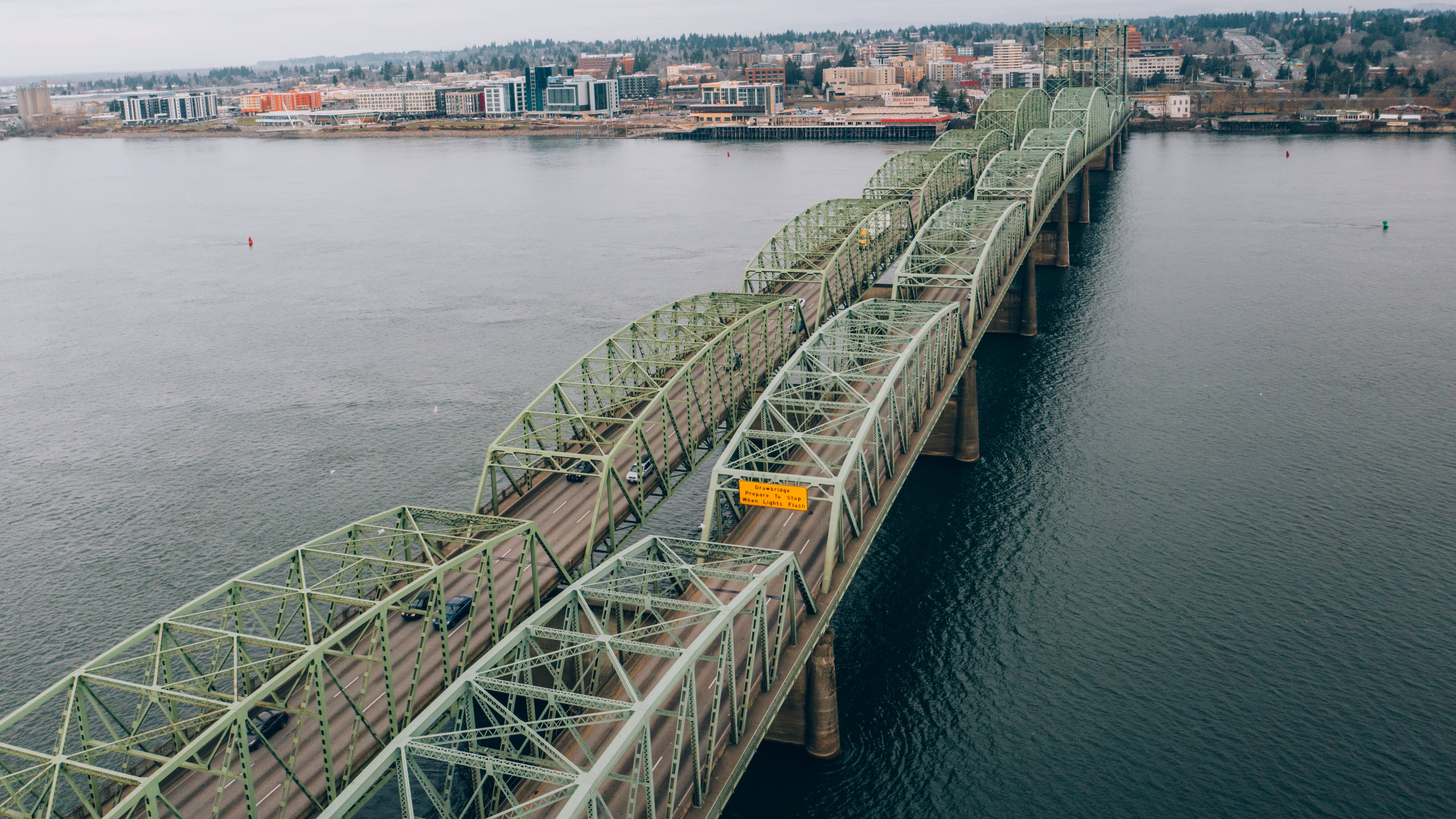As the latest version of the proposed Interstate Bridge replacement between Portland and Vancouver moves toward votes at Metro, Multnomah County and the city of Portland, critics from more than two dozen environmental, transportation and social justice organizations went on the attack last week.
They claim the project would worsen carbon emissions, is being fast-tracked without sufficient planning or financial vetting, and that the two states’ departments of transportation have failed to consider alternatives.
“The IBR would be the most expensive infrastructure project in the region’s history, and the two state DOTs have failed to do even the most basic financial planning,” says Portland economist Joe Cortright of the Just Crossing Alliance. “The project’s traffic forecasts are inaccurate, the cost estimates are based on decade-old engineering work, and the selected high bridge option is the riskiest, most expensive and least affordable approach to solving this problem.”
Among the matters at issue: whether the bridge should be a drawbridge or tall enough that ships can pass under it.
Drawbridges mean traffic delays, as anyone traversing a river during Fleet Week can attest. But the Just Crossing Alliance argues that a tall bridge presents its own drawbacks.
“At 116 feet over the shipping channel (and the Coast Guard could require an even greater height), the grades on this project will likely make the bridge crossing inaccessible for active transportation users of all ages and abilities,” the group writes, “and may also create challenging conditions for freight at some ramps.”
It’s also possible to see the alliance as hunting for new allies with its objections. Chief among these: a cautionary note about what a tall bridge would do to the skyline along the Vancouver Waterfront. That objection echoes the tactics used by neighborhood groups to block new apartment towers—though deployed to a different aim.
“The visual impact of the structure, particularly on Hayden Island and the Vancouver Waterfront, has not been sufficiently explored,” the letter says. “The project has been careful to show bird’s eye views. We need to see ‘from the ground up’ renderings of what this structure will look like.”
Greg Johnson, Interstate Bridge Replacement program administrator, says local governments are helping to choose what aspects of the bridge will be evaluated.
“For the past year and a half, local agency partners have participated in the iterative process leading to the current work to endorse a recommended Modified Locally Preferred Alternative that identifies the foundational elements to evaluate in the environmental review process,” Johnson said in a statement. “We have been working with our federal partners, Federal Highway Administration and Federal Transit Administration, who oversee the National Environmental Policy Act process, to assure we are meeting the federal guidelines for this project. Corresponding cost estimates will be refined as more program details are determined.”
